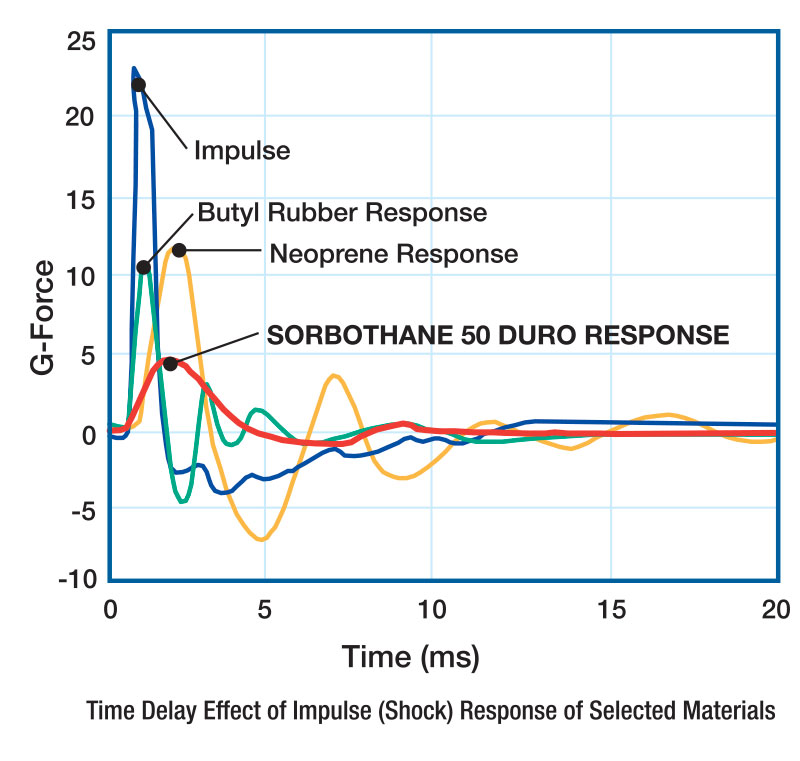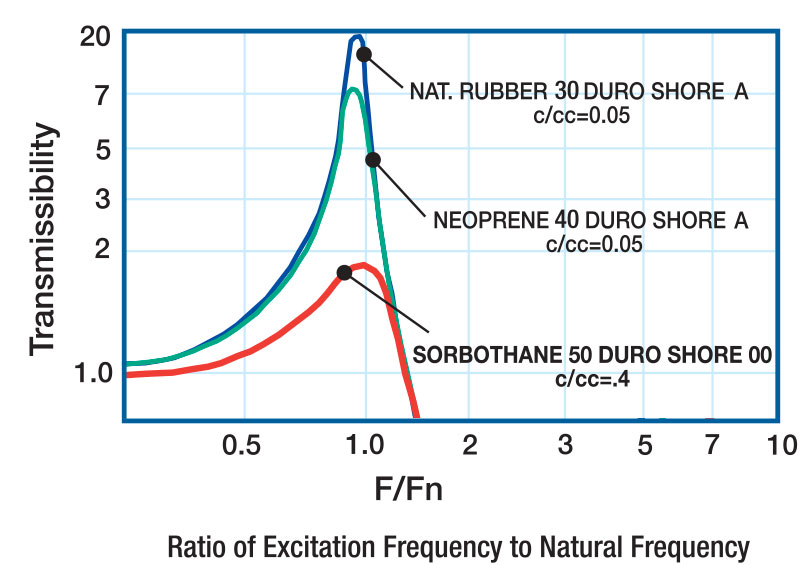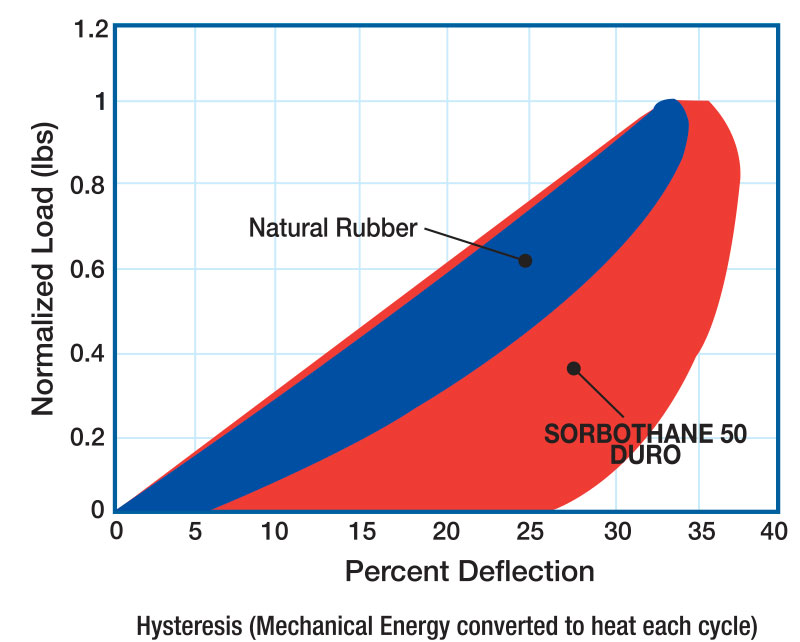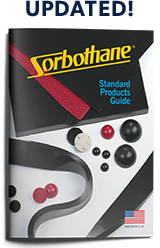Sorbothane® Performance Curves
Sorbothane turns mechanical energy into heat. As the material is deformed, molecular friction generates heat. This “lost energy” is called hysteresis. Energy is translated perpendicularly away from the axis of incidence, and its effect is pushed nearly 90° out of phase from the original disturbance. This phase shift, known as “Tan Delta,” is a measure of Sorbothane’s damping effectiveness. The higher the value of Tan Delta, the greater the amount of damping that occurs.

Controlling Shock
High damping in a polymer reduces the impulse peak of a shock wave over a longer time frame. Sorbothane reduces the impact force up to 80 percent and brings the mass slowly to rest. A gradual deceleration affords better protection of delicate equipment. Sorbothane exhibits very low rebound when compared to other materials.

Controlling Vibration
Low transmissibility (amplification) at resonance demonstrates the damping superiority of Sorbothane over other elastomers. Low transmissibility means less damage to sensitive components. Isolation at large frequency ratios also shows a capacity to isolate vibration.

Impact Absorption
This graph shows the high hysteresis necessary for efficient impact absorption. By comparing the area under the curves, it’s clear Sorbothane removes more of the impact energy from the system. Natural rubber is more elastic and returns energy to the system. High energy return causes high rebound and increases the potential for damage. Sorbothane can decelerate parts and reduce peak forces during sudden stops in minimal sway space. Impact absorption up to 80 percent is achievable at proper dynamic deflections.

